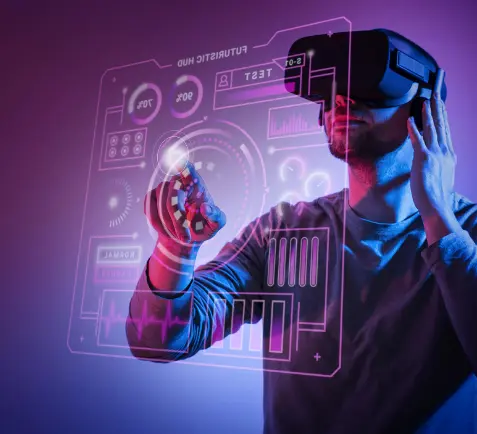IRDAI InsurTech Event titled- ‘InsurTech -Catalyst that inspires’ concluded on May 30th in Bengaluru. The event aimed to emphasize on InsurTech ecosystem and its benefit for insurers and saw participation from leading companies like Policybazaar, Shri Ram General Insurance, Reliance General Insurance, and Mantra Labs to name a few. IRDAI chairperson, Mr. Debasish Panda highlighted on the insurance and Insurtech partnerships and the significant role that InsurTechs can play in assisting Indian insurance sector to grow. Parag Sharma, CEO Mantra Labs, was invited as a guest speaker at the event to talk about AI and The Gen Z Experience.
Here are the key takeaways:
- Insurtech 3.0 is all about ‘Experience Economy’. With evolving customer expectations, the real challenge for the insurance industry is getting a product faster. Digital customers today want to buy an experience rather than just a product or a service. Partnering with Insurtechs would give insurers much-needed tech capabilities for product innovation.
- Gen Z places importance on customer experience in various decision-making areas and their willingness to pay a premium for a better experience. In fact, CX is the deciding factor in the buying decision for Gen Z.
- Leveraging technologies such as AI, computer vision, predictive analytics, NLP, OCR across the insurance life cycle to create a superior Gen Z experience.
Stage 1: Consider and Evaluate
Data plays a key role in risk evaluation, decision-making process, and improving customer experience. Predictive behavioral analytics helps in identifying consumer patterns and the intent of those behaviors. Insurers need to forecast customer expectations based on historical pattern to improve satisfaction scores and boost revenue per customer.
The ‘Digital Behavioral Intelligence Tool’ by Formotiv helps insurers decipher user motivation and intent scores. They collect roughly 5,000-50,000 behavioral data points from 140+ different features on each individual application and provide personalized product recommendations
Stage 2: Buy and Experience
Speed is what the new customer segment wants. Insurers will need to leverage advanced AI and workflow management to improve onboarding experience for the customers.
Stage 3: Improving underwriting through AI-Based Dynamic and Smart Decision making in real-time.
Artivatic has introduced a next-gen smart underwriting cloud–AUSIS which helps to connect, and integrate existing or third-party applications and APIs for end-to-end process.
Source: Artivatic Insurtech & Healthtech platform
Stage 4: Payment & Claims Management
Fraud Detection with AI and ML models.
Anadolu Sigorta recently tested a predictive fraud detection system. This detection engine uses automated business rules, self-learning models, predictive analytics, text mining, image screening, device identification, and network analysis that deliver immediate, actionable insights. A.S. attributed over $5.7 million in savings from the AI system.
Claims processing through Computer Vision technology.
Tokio Marine uses an AI-based CV technology to expedite the motor claims process in Japan. AI image recognition allows insurers to evaluate the damage to a vehicle.
The app also shares repair method recommendations and guides the claim process to ensure each claim is processed and settled as quickly as possible.
- Every insurance provider must become a part of the insurance ecosystem.
We are in a world of growing connected devices. McKinsey report suggests there will be about a trillion devices by 2025 that will connect and share data with interoperable standards.
Ecosystems that will enable this data sharing are already shaping up.
One such upcoming ecosystem is NDHM, now called ABHA. Right now, the focus of this ecosystem is on seamless data exchange between health facilities, and it is just a matter of time when this will be extended to insurance as well.
Another ecosystem that is fast around the corner is that of connected devices (medical/non-medicals/cars, fitness trackers, smart home gadgets, etc.). Data collected from these devices not only will enable insurers to create innovative products but also help in processing claims without any friction.
Creating a frictionless Gen Z experience will require insurers to be part of these or at least hook into these ecosystems. Technology will act as an enabler in doing so.
Summing Up
Building a great Gen Z experience on the foundations of data will need long-term conviction, patience and continuous analysis of user behavior.
Moral of the story is: Smell the cheese often so you know when it is getting old.
We should not be expecting things to remain as they were in the past. A keen eye for the data will help us be nimble and be a step ahead in meeting customer expectations.
If you’re interested in learning about next-gen technologies and how your business can make use of AI, we would love to speak with you. You can reach out to us at hello@mantralabsglobal.com
Knowledge thats worth delivered in your inbox




